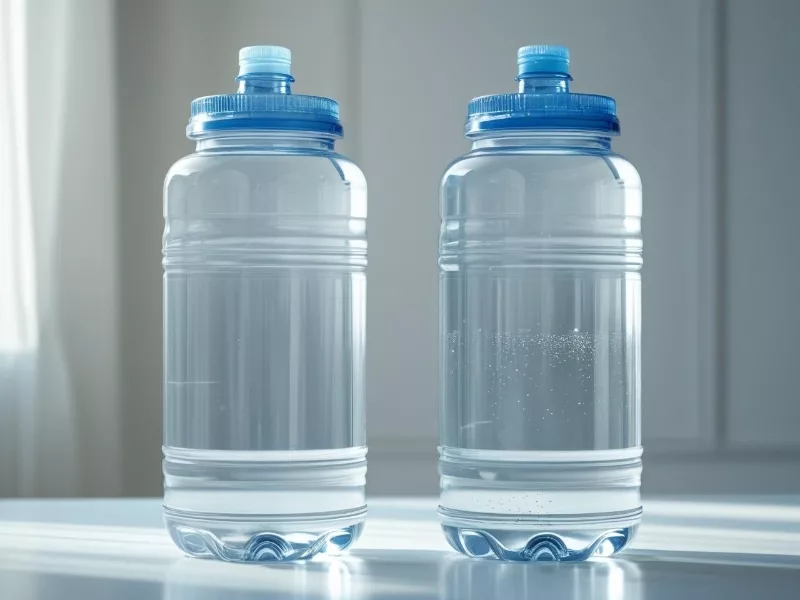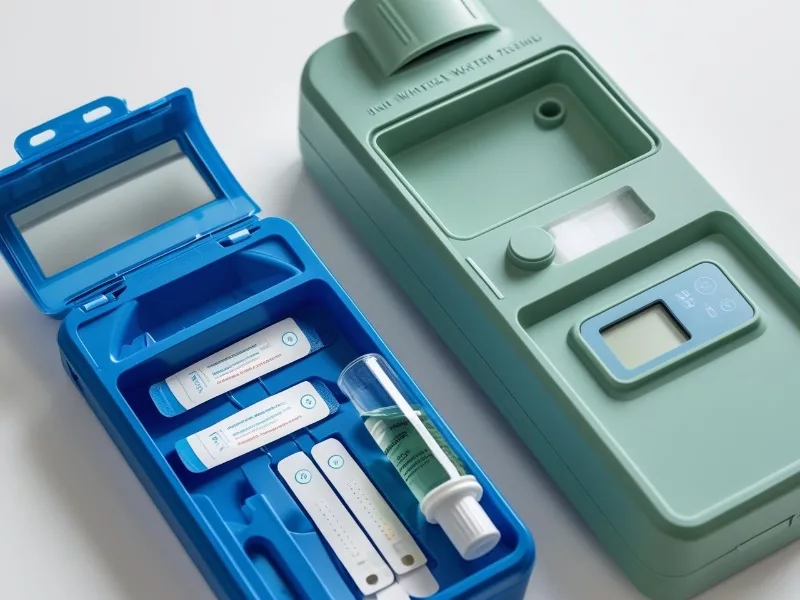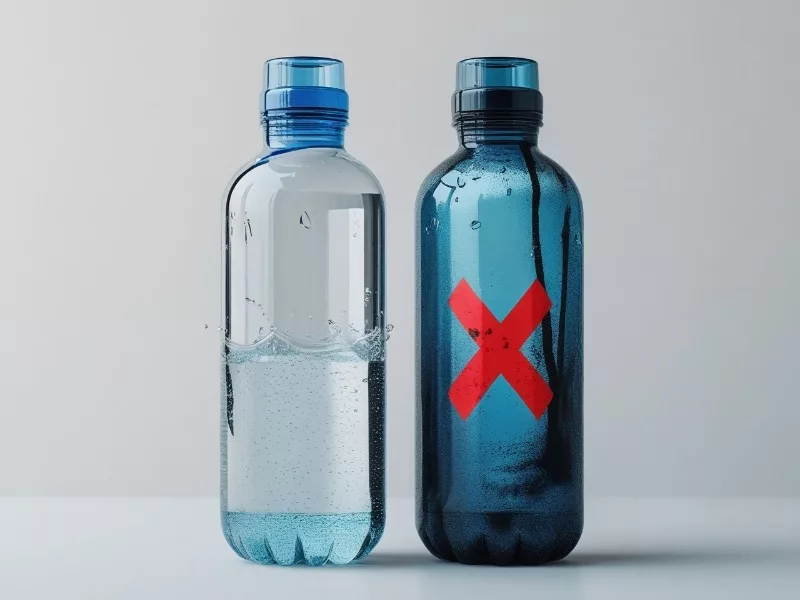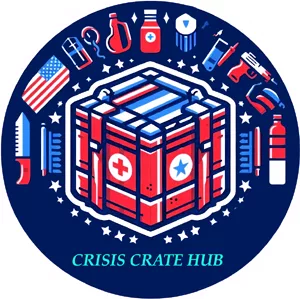Table of Contents

Water Bottle on the Left Is Not Contaminated While the One on the Right is Contaminated
Water contamination is a silent enemy, often lurking where you least expect it—in your storage containers. Recognizing how contamination occurs is crucial to keeping your stored water safe. Sources of contamination can be surprisingly varied. Microbial growth is one of the most common issues, thriving in an unclean or poorly sealed environment. Chemical pollutants, another major concern, might sneak in from external sources or previous contents of the container. Physical debris, though seemingly harmless, can also affect the quality and safety of your water if left unchecked.
Common sources of contamination are often linked to human negligence or environmental factors. For example, containers that haven’t been properly cleaned can harbor bacteria or chemicals that leach into stored water. Environmental pollutants might find their way into your storage due to a badly fitting lid or seal, especially in outdoor settings. Flooding or excessive humidity can also introduce unexpected contaminants into your storage, leading to potentially harmful water quality changes. Understanding these sources is the first step in safeguarding your water supply.
Identifying Contaminated Water: Key Techniques
Spotting contaminated water isn’t always about science; sometimes it’s about simply using your senses and a bit of know-how. Monitoring and identifying signs of contamination early can save you from potential health risks.

Again The Left Side Bottle is Pure and The Bottle on the Right Side is Contaminated
One of the simplest ways to start is with a visual inspection. Check the clarity of the water first. Cloudiness or any floating particles are red flags that something isn’t right. Unusual colors or sediments at the bottom of your container can also indicate contamination. These signs are your cue to take further action—either testing the water or looking into treatment options.
Don’t discount your nose and taste buds when figuring out water safety. A foul or off smell is a telling sign. If the water has an unusual taste, or if it reminds you of chemicals, it’s best not to drink it until it’s been properly tested. Relying on these senses can provide an early warning before more advanced testing is needed

While using senses is helpful, confirming suspicions with tests is essential. Comprehensive testing kits available on the market allow homeowners to check for bacteria, heavy metals, and other harmful substances. These kits provide peace of mind, especially if your water has been stored for long periods. Regular testing shouldn’t be overlooked as it’s a key component in ensuring your water’s safety.
Testing and Treating Contaminated Water Safely

Water Testing Kits for Home
Testing for contaminants might sound technical, but it’s a straightforward process once you get the hang of it. Water testing kits are lifesavers here, especially those that screen for bacteria, heavy metals, and other no-nos. If you’ve got stored water hanging around for a while, frequent testing is your best buddy, keeping potential hazards at bay.
Boiling is another go-to for purifying water. Bringing water to a rolling boil for at least a minute (or up to three minutes if you’re up in higher altitudes) can effectively eliminate harmful microorganisms. It’s simple, but sure, and when you’re in a pinch, it’s a method that can be counted on to deliver safe drinking water.

Both these methods are practical solutions for most situations, ensuring your water is back to being safe and sound. Ensure you always follow up disinfection with a review of how contamination occurred to prevent future issues.
Best Practices for Water Storage and Maintenance
Storing water isn’t just about putting it in any old container; it’s crucial to select the right, food-grade containers to keep your supply safe. Clean and sanitize these containers before use to prevent any initial contamination. Steer clear of using containers that once held toxic substances, such as bleach or pesticides, as residue can seep into your stored water, causing potential health hazards.

Maintaining your water storage is as important as the storage itself. Regularly inspecting and cleaning your storage tanks helps prevent contamination from setting in. Also, make it a habit to replace the stored water every six months. This practice keeps it fresh and minimizes the risk of contamination over time, ensuring your water is always ready for use.
In a pinch, when contamination strikes or storage fails, having an emergency preparedness plan is essential. Know your options for emergency water supply and ensure that everyone in the family understands how to identify and treat potential water contamination. Educating everyone in the household means you’re all prepared, reducing panic and confusion in real situations.
For ongoing insights and best practices in water safety, refer to guidelines from reputable sources such as the CDC or your local health departments. These resources provide valuable updates and safety standards to help guide your efforts in maintaining a secure and safe water supply.
